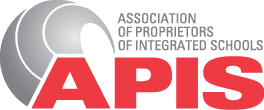There are 90,974 students in state integrated schools in New Zealand, which represents 11.3% of the schooling network.
Of these, 42% are Y1-6 Primary students, 41% Y9-13 Secondary students and the remainder (17%) Y7-8 Intermediate level students, who may be in primary or secondary schools.
The number of state integrated school students continues to hold steady; there are about 940 additional students comparing 2017 to 2018. This represents a less than .01% decline in the total share of students in New Zealand.
State integrated schools are increasingly ethnically diverse. The European/Pākeha student population in State integrated schools is 52%, with the next largest group being Asian students (15%) and Māori and Pasifika students following closely (14% and 13% respectively).
There are 330 state integrated schools in New Zealand, with an average school size of around 275 students. Most state integrated schools are Full Primary schools (Y1-8) but they are the smallest schools with an average student roll of around 160. Most secondary schools are open to Y7-13 and have an average student roll of about 632.
Unsurprisingly, most of our state integrated school students are based in the Auckland region. Overall, regional representation tracks well with the proportion of the whole school population in New Zealand.
The Taranaki, Wellington and Southland regions have more than 15% of all students in the region attending a state integrated school (the average for New Zealand being 11.3%).
There are seventeen different special character affiliations in state integrated schools in New Zealand. The six largest of which represent over 97% of all state integrated students (Roman Catholic, Christian, Anglican, Presbyterian, Rudolf Steiner and Seventh Day Adventist). Other special character affiliations make up the remaining 3%.
An update of this report will be timed to follow the Ministry of Education release of the March roll returns. A downloadable PDF version is available here.
